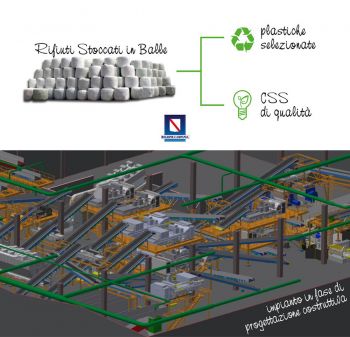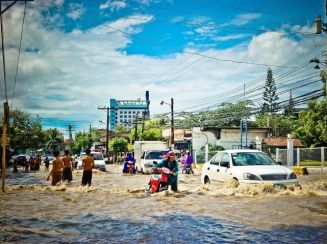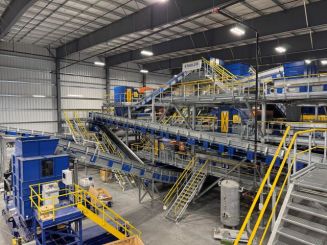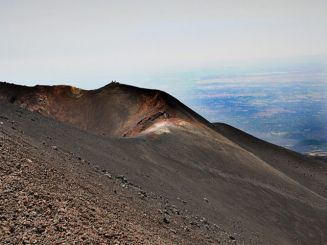
Close to the turning point: eco-bales in Campania on their last legs
Between 2000 and 2010, in Campania (Italy’s Region), there has been an accumulation of over 40,000,000 tons of eco-bales. Approximately 1 million were taken out of the region, therefore the remaining 3 million will be disposed of at 2 plants: Caivano and Giugliano in Campania.
CISA S.p.a – Massafra (TA), was awarded the public contract of Regione Campania, PAL is in charge of the construction design phase and subsequent implementation of the process lines for the construction of a plant that can treat eco-bales and produce SSF i.e. secondary solid fuel and sort recyclable material. The plant, once in full operation, will have a treatment capacity of 200,000 t/year and will enable to dispose most of the eco-bales currently stored in the Region. The award of the contract was entrusted with Cisa that, in turn, engaged PAL to design and manufacture all the electromechanical works as turn-key solutions.
The commitment made entails complete delivery within the first quarter of 2022. The works will be mostly carried out inside a closed warehouse and provide for the installation of cutting-edge machinery with the latest solutions available on the market.
The importance of this plant is of collective interest as it will eventually eliminate a problem that has been affecting our Country for over 30 years. In particular, it will reduce the environmental impact as it will lead to the reclamation of entire hectares of areas dedicated to the storage of bales and will relieve Italy from EU sanctions that cost € 130,000 a day. The area indicated for the construction of the plant is the site of former Enel Turbogas Power Station, located in Ponte Riccio of the Municipality of Giugliano in Campania (Naples).
Technology
The technology underlying the plant in question is based on the maximisation of the sorting of materials through the treatment and sorting of waste stored in bales (RSB).
The project layout, that derives from previous experience gained by the work team, both in the design and management field, provides for the optimisation of production lines and areas.
In particular, the treatment line was studied and designed to maximise the automation of the process by optimising the material transport systems. The expected layout and the potentiality of the machines used do not require any intermediate storage of material, guaran- teeing incoming waste to follow - along a continuous flow - the various treatment phases during which the different fractions will be removed as and when requi- red (to be forwarded to disposal and/or recovery) for their final storage.
Given the above, great importance was paid to the study of the different operating stages and the valuation of the volumes sorted at the start of the single treatments that waste must undergo. In this way, it is possible to ensure storage areas that, if needed, can guarantee at least three days’ production also in the event of stoppage of outgoing flows and incoming storage equal to 5.5 days’ supply.
The project provides for the use of a double treatment line that will guarantee 35 t/h each.
The analysis of the flows thus led to develop a layout that is highly flexible and capable of maximising the expected performance.
The complete automation of the sorting process proposed, allows to speed up processing eliminating human error and creating more homogeneous flows of materials and to be configured by the operators in charge of ongoing control.
Process
Waste bales will be conveyed to the treatment by two self-propelled polyp loaders that will feed the two primary shredders fitted at the head of the two lines. The function of the primary shredders will be to break the bales and homogenize the waste before starting the subsequent treatments.
The material exiting the shredders will be transferred to the first two electromagnetic sorters (placed in the head of the conveyor belts exiting the shredders for sorting of any ferrous materials present).
Subsequently, the flow is conveyed to 2 drum screens that will divide the product in two fractions:
- 1 >40 mm over-screening fraction
- 2 <40 mm under-screening fraction
The > 40 mm over-screening fraction will be forwarded to two aeraulic sorters that can sort three flows of material:
- 2D light fraction (comprising mix of paper and mostly film plastic) will be forwarded to the recovery of material through 4 optical sorters that will separate the film plastic fraction (LDPE) bound to be turned into energy at external plants and waste that will be sent to the refining section;
- medium fraction made up of a mix of 3D plastic such as bottles and similar containers that must be sent to recovery of material. Said fraction will be forwarded to a series of 3D optical sorters, which will allow to sort the plastic mix bound to subsequent sorting by type of material and a flow of waste that instead will be forwarded to the final section of the refining of the SSF. Here the PVC may be removed through a further optical sorter before submitting to shredding;
- heavy waste fraction with aggregates: it will be conveyed with the < 40 mm flow exiting the primary sorting phase
Sorted material
As specified earlier on, the process foreseen will allow, besides the treatment of waste transferred in bales for the production of SSF to be sent to authorised waste-to-energy plants (cement factories or waste-to-energy plants) for processing, the sorting of material such as metals and plastics to be sent to external plants for recovery. More specifically, 2 electromagnets, an eddy current separator and a permanent magnet for the separation of metals and 11 new generation optical selectors for the selection of plastics were used.















